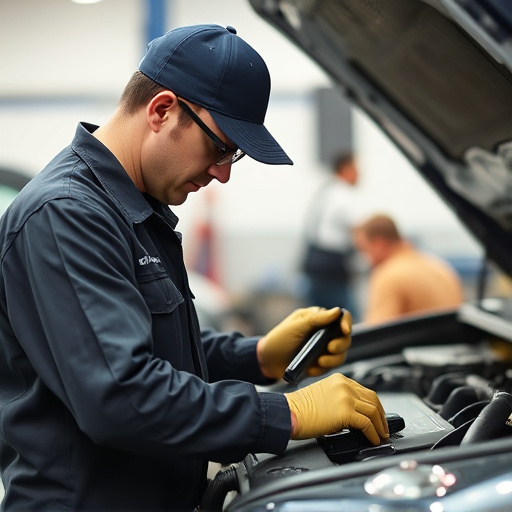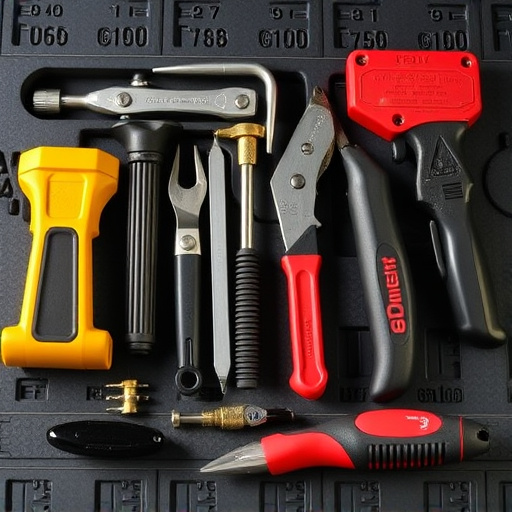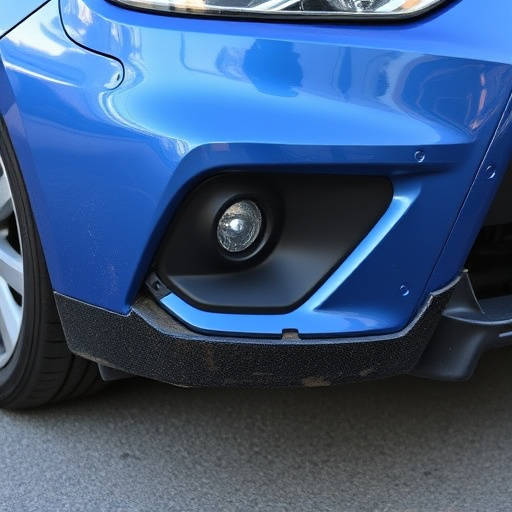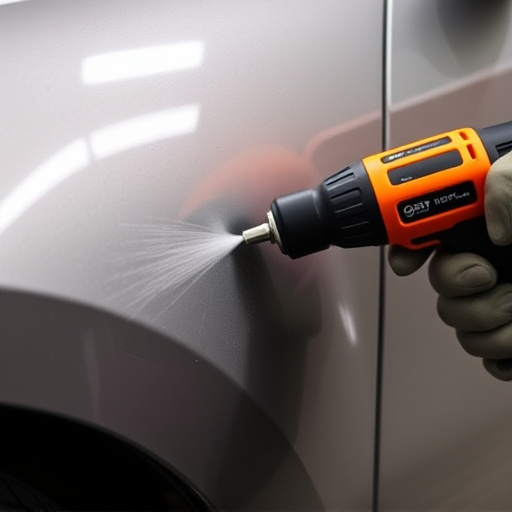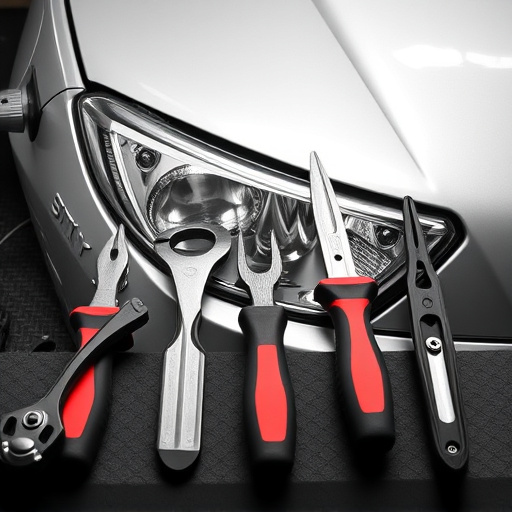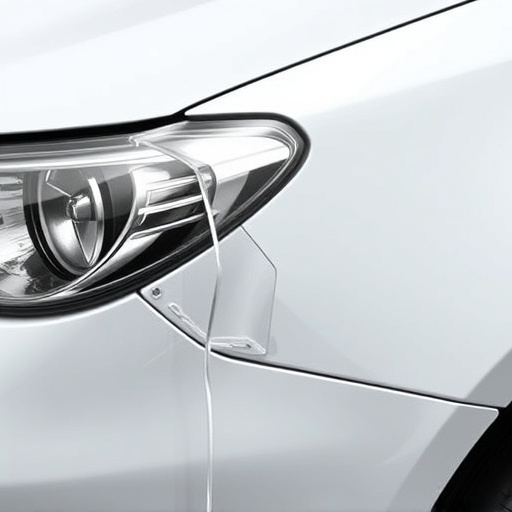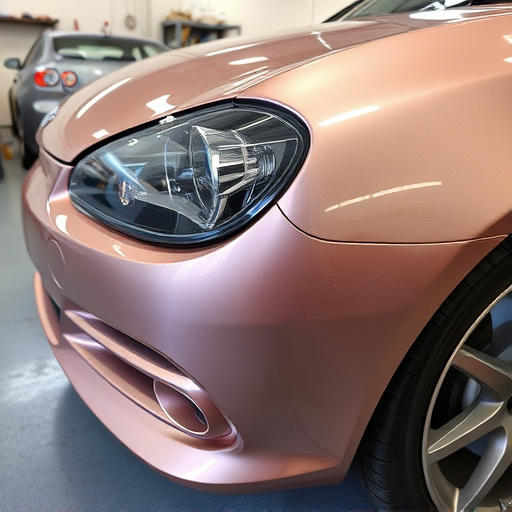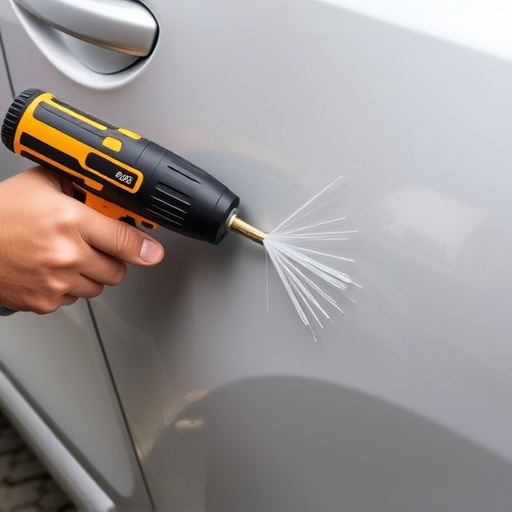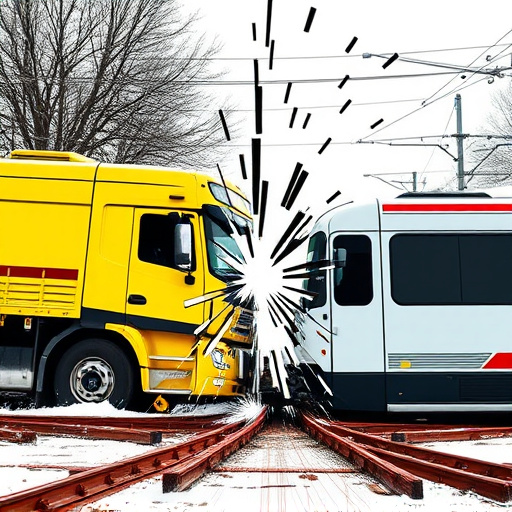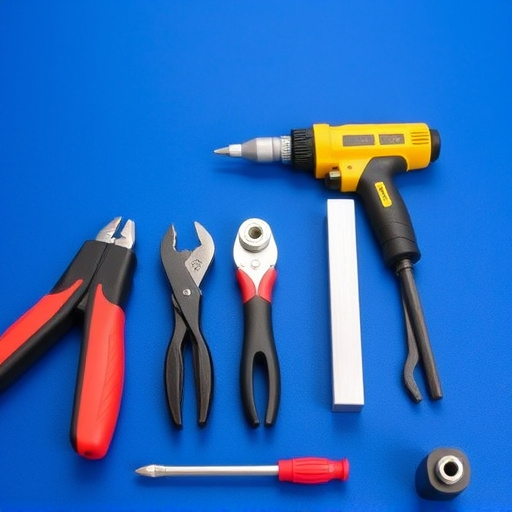Quarter panel replacements by mobile collision repair services offer on-site solutions for damaged car quarters, maintaining structural integrity and safety. The process involves assessment, surface preparation, removal of old panels, installation of new ones, and final inspection. Best practices ensure quality and longevity through meticulous inspection, precise cutting, alignment, use of high-quality parts, and expert painting techniques, blending seamlessly with the vehicle's existing finish.
In the realm of mobile collision repair services, efficient quarter panel replacement is a game-changer. Understanding the extent of quarter panel damage and its impact on vehicle aesthetics and safety is paramount. This article serves as a comprehensive guide, offering insights into the step-by-step process of effective replacement and best practices to ensure quality and longevity in repairs. Explore these essential techniques for mastering quarter panel replacement.
- Understanding Quarter Panel Damage and Its Impact
- The Step-by-Step Guide to Effective Replacement
- Best Practices for Quality and Longevity in Repair
Understanding Quarter Panel Damage and Its Impact

In the event of a “fender bender” or minor collision, one of the most commonly affected areas of a vehicle is the quarter panel—a component that runs along the side of the car from the door to the rear wheel. Quarter panel replacement is often required in such instances due to damage that can range from dents and dings to more significant bends and creases. These issues not only impact the vehicle’s aesthetics but also its structural integrity, as even seemingly minor quarter panel damage can compromise a car’s overall safety.
Proper quarter panel repair, whether through straightening or complete replacement, is crucial for restoring both the look and performance of your vehicle. Skilled mobile collision repair services offer on-site solutions for such repairs, including expert assessment, precision straightening techniques, and top-quality replacement parts. This not only saves time and reduces stress but also ensures that your car undergoes a thorough car body restoration process, leaving it in better condition than before the incident.
The Step-by-Step Guide to Effective Replacement
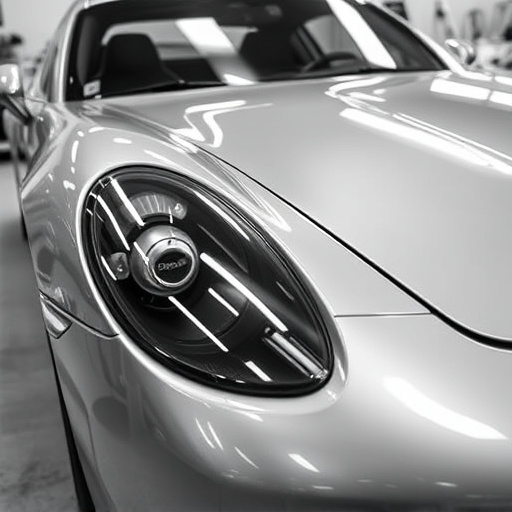
Performing a quarter panel replacement is a meticulous process that demands precision and skill. It’s a common procedure in mobile collision repair services, addressing damaged or dented car quarters efficiently. Here’s a step-by-step guide to ensure effective replacement:
1. Assess the Damage: Begin by thoroughly inspecting the damaged area. Identify the extent of the dent removal needed. Mobile collision repair technicians should be equipped to handle various levels of damage, from minor dings to significant deformities.
2. Prepare the Surface: Once the dent removal is confirmed, prepare the surface for replacement. This involves removing any loose debris and ensuring the panel is clean and free from contaminants. Proper surface preparation guarantees a strong bond between the new quarter panel and the car’s bodywork services.
3. Remove the Old Panel: Carefully disassemble the damaged quarter panel, taking note of its components and how they connect. This step requires careful handling to avoid further damage or misalignment during the autobody repairs process.
4. Install the New Panel: Fit the new quarter panel precisely, ensuring it aligns perfectly with the car’s contour. Secure it in place using appropriate hardware, adhering to the vehicle manufacturer’s guidelines for a seamless fit.
5. Inspect and Adjust: After installation, inspect the replacement from various angles to verify its integrity and alignment. Make any necessary adjustments to ensure the panel is flush and secure, demonstrating the highest standards of car bodywork services.
Best Practices for Quality and Longevity in Repair
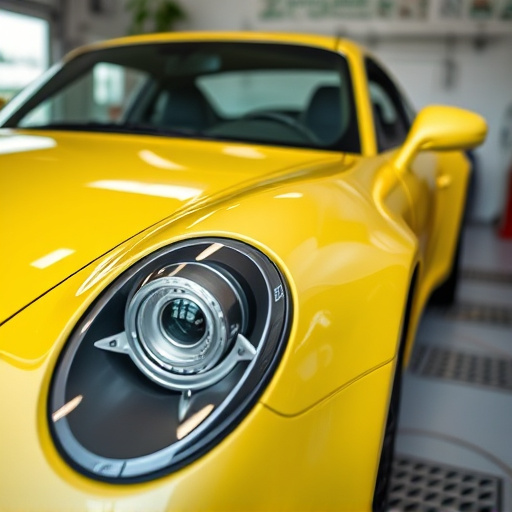
When undertaking a quarter panel replacement as part of mobile collision repair services, adhering to best practices is paramount for ensuring both quality and longevity in the repairs. The first step involves careful inspection of the damaged area, which includes identifying the extent of the damage and assessing the need for additional car body repair or car dent removal techniques. Precision and attention to detail are crucial throughout the process, from measuring and cutting the new panel to ensuring proper alignment and fit.
Utilizing high-quality replacement parts is another critical factor in achieving durable results. This involves sourcing original equipment manufacturer (OEM) panels or certified equivalents that match the original specifications of the vehicle. Additionally, proper painting techniques should be employed to ensure a seamless finish that integrates with the existing color and texture of the car’s body, effectively concealing any previous car scratch repair sites or other imperfections.
In conclusion, mastering the art of quarter panel replacement is a game-changer for mobile collision repair services. By understanding common damage types, following meticulous step-by-step guides, and adopting best practices, technicians can ensure not only high-quality repairs but also the longevity of vehicle panels. This skill set is vital in today’s competitive market, where customers demand swift and reliable solutions. Embracing these strategies will enhance your service offerings and leave a lasting positive impact on clients’ vehicles and experiences.
